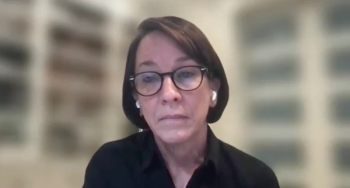
Pulling Back Funding for Research Could Leave HIV Treatment in Worse State: Patrick Sullivan, DVM, PhD
Funding cuts for research intended to make treatment and cures available and accessible for patients with HIV could affect HIV care in the long term.
Patrick Sullivan, DVM, PhD, an infectious disease epidemiologist and professor of epidemiology at Emory University in Atlanta, Georgia, spoke about the effects that funding cuts to both HIV prevention and HIV cure research could have on making those treatments available and accessible to those who need it, especially when it comes to accessing pre-exposure prophylaxis (PrEP).
This transcript has been lightly edited for clarity; captions are auto-generated.
Transcript
How have cuts to HIV cure and prevention research affected the state of HIV in the US?
I think your question is so important, because HIV is a complicated public health problem that is an infectious disease, but we also know that it has a lot of interplay with other social determinants of health, and that there are big disparities and inequities in the epidemic in the United States. It's not going to be as easy as saying, "Let's just get a vaccine," or "Let's just get a treatment." We really have to think about multiple avenues to pursue all at the same time, and the United States has been a global leader in these efforts. For example, the HIV vaccine and cure programs have been global efforts, but with substantial US fiscal leadership and also scientific leadership. Those programs are long games. There's no question. But they're long games with amazing rewards in terms of improving health and in saving health care dollars. Pullbacks in vaccine and cure programs; broader NIH cuts and NIH investments of things that are really forward looking; vaccines, long acting, and resistant, avoidant treatment regimens, all these things are potentially going to experience a cutback in funding, or a ceasing in funding.
It's also important to say that another great resource in the United States is that we've had a coordination of NIH driving and convening the best sciences to do research; CDC working with local health authorities who have those relationships with their communities to implement programs that are effective; and then HRSA dealing with the idea of making care accessible to people who are in most need of it. Although this report focuses on PrEP, I really want to emphasize that these pieces about care are at least of equal importance. One, where an incredibly well resourced country whose investments have driven the development of cures that would have seemed impossible when I first became aware of HIV, when I first started in working in HIV prevention. If you had told me we would have treatments that would help people to lead full lifespans, that would have seemed like an impossibly rosy, good outlook for HIV prevention, and we probably would have said, well, when we have all that the epidemic will be over.
What we're finding is that that it's not enough to have the biomedical solutions. You also have to have the levels of support and the will and the resources to reach people who are in need of these treatments. It's not as easy as saying, we now have a pill, everybody figure out how to take it and work it out for yourselves. Many of the communities that are disproportionately impacted by HIV are also communities that are located farther away from where those medications might be available. Many of the communities heavily impacted are areas where they may be in need of using public transportation to access those; that's more time away from jobs. Our public health work has been to make these kinds of treatments and preventive agents easily accessible, to lower the barriers, lower the cost barrier, lower the interval with which you need to come in for visits, make it more convenient. Can it be sent to people's houses? How do we roll out? And there's been a lot of innovation and a lot of energy around that.
My concern is that when you start to back off, especially from the things that lower barriers, like 0 copays or more convenient locations, that we are going to have reductions in PrEP. My concern is that those reductions in PrEP use and in treatment coverage are going to happen first in the people who have the most barriers to accessing them. Yes, it's about making sure that these medications, are available, but it's also about making sure that they're accessible to everyone who needs them, and to lowering those barriers to access.
Newsletter
Stay ahead of policy, cost, and value—subscribe to AJMC for expert insights at the intersection of clinical care and health economics.













































